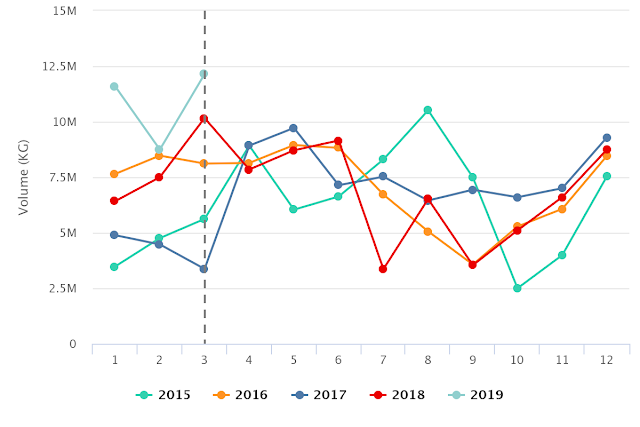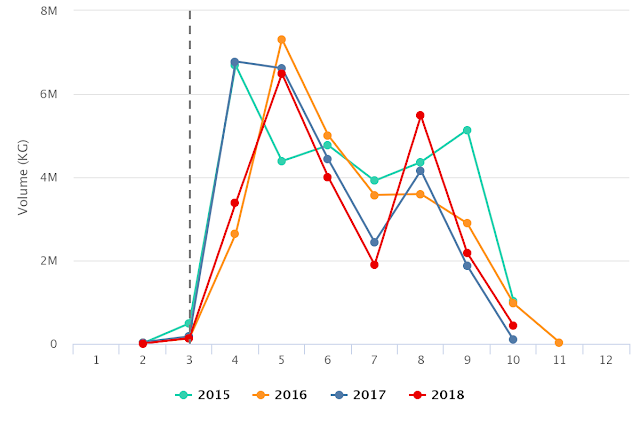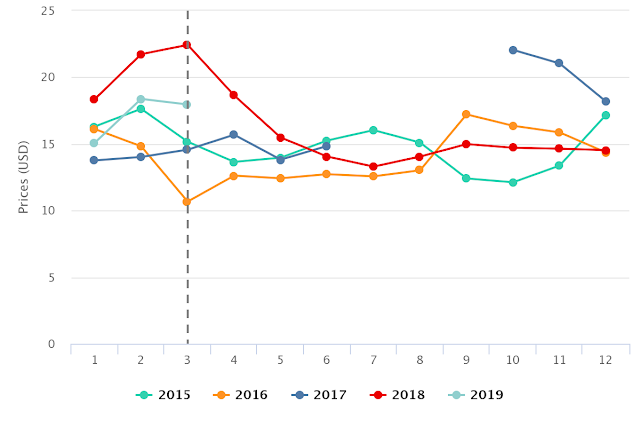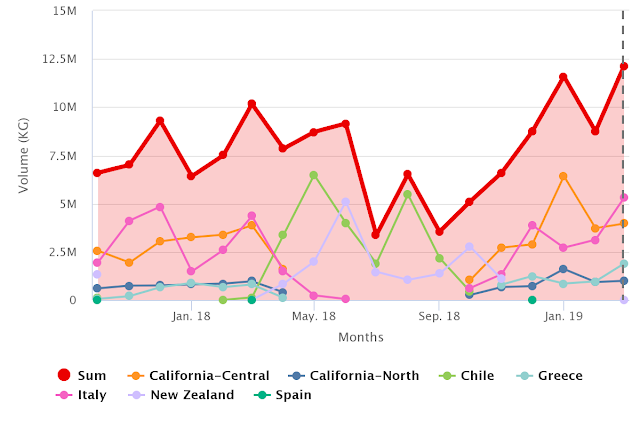Kiwifruit in Charts: With stocks at five-year high, how will prices fare for Chile?

The kiwifruit in a berry that originates in a large area of China, but especially in the Yangtze River Valley. Introduced into New Zealand in 1904, it has since been cultivated in numerous countries around the world. It was given the name ‘kiwi’ in New Zealand, possibly due to the similarity with the small, flightless bird native to the country. The fruit arrived in Chile in the 1980s, helping growers to diversify their offerings and improve profits.
Today the situation is quite different, and in this In Charts article we will look at what could be in store for the Chilean campaign in the U.S. market, and how it could compare to last year.
As we can see in the chart below, kiwifruit volumes in the U.S. in March 2019 were the highest in five years, which caused a slight price drop over the last few weeks.

Source: USDA Market News via Agronometrics. (Agronometrics users can
view this chart with live updates here)
According to the Chilean Kiwifruit Committee, the country’s production could be around 5% lower year-on-year this season, with forecasts of around 175,000 metric tons (MT) compared to 184,000MT in 2018.

(Source: USDA Market News via Agronometrics. (Agronometrics users can
view this chart with live updates here)
Given this forecast, it is possible that prices of Chilean kiwifruit will, in turn, be around 5% higher, unless other origins like New Zealand send much larger volumes than last year.
Sales prices of Northern Hemisphere kiwifruit have been lower than the previous season, while stocks of Italian fruit have been similar to last year.
With the Chilean harvests now fully underway, supply looks like it will be stable in the U.S. over the coming weeks – amid the high stocks of Italian fruit together with Greek stocks – and this will likely keep prices below last year’s levels. The chart below shows the historic development of prices throughout the year.

(Source: USDA Market News via Agronometrics. (Agronometrics users can
view this chart with live updates here)
As we can see from the following chart, Chile’s biggest competition comes from Italian and Greek kiwifruit stocks in the beginning stage of its season and New Zealand during its season.

(Source: USDA Market News via Agronometrics. (Agronometrics users can
view this chart with live updates here)
In summary, we are seeing a stable North American market, with prices to date lower than last season, and a stable supply of Greek and Italian kiwifruit. Prices will likely not rise until the end of the Italian season and will be heavily dependent on how supplies from New Zealand turn out.
Written by: Cristian Crespo
Original published in FreshFruitPortal.com on April 23, 2019 (Link)






